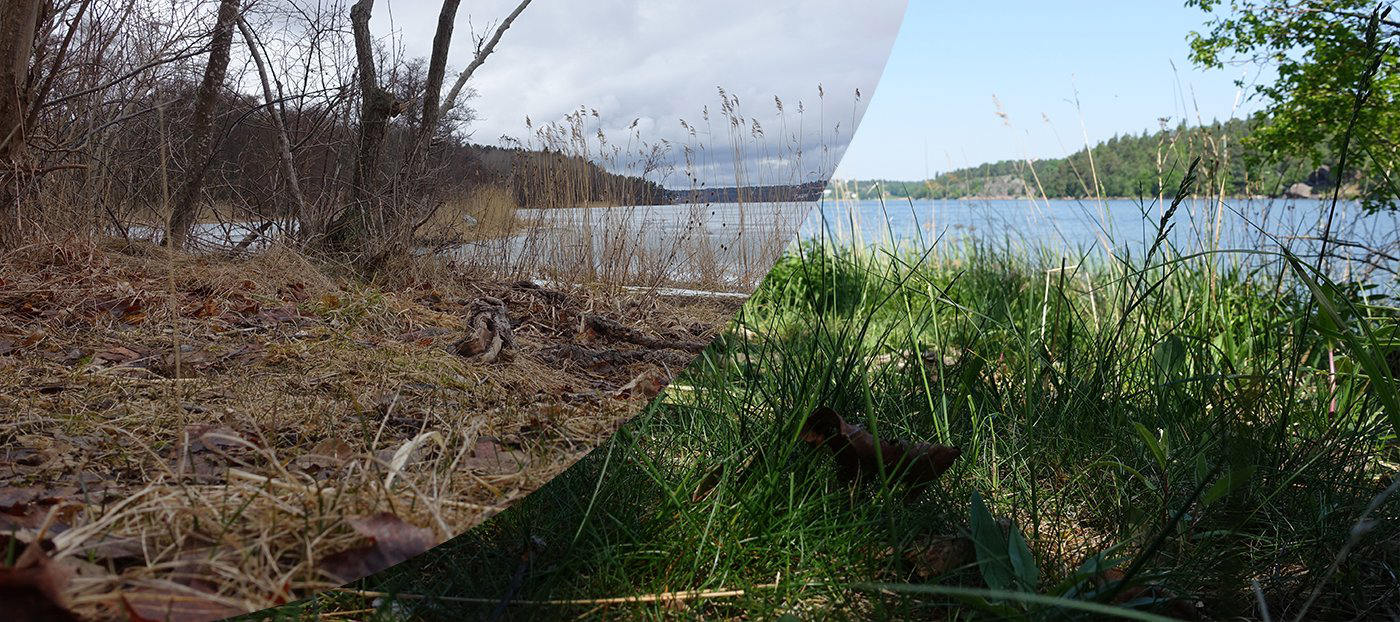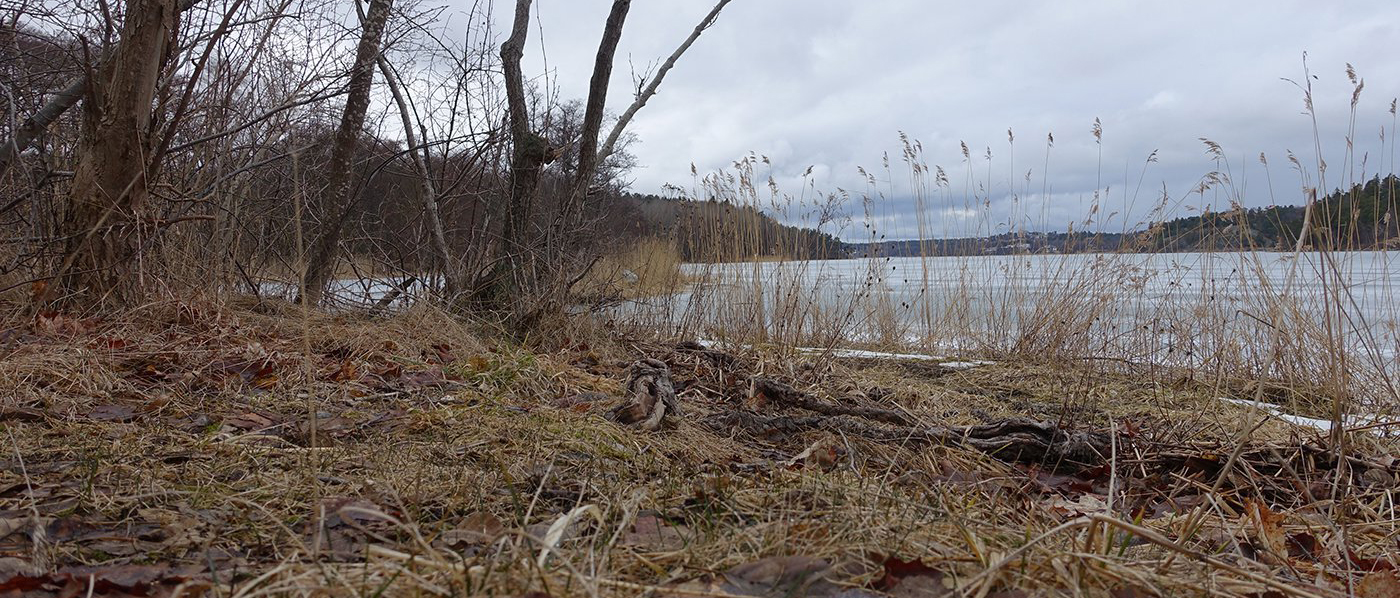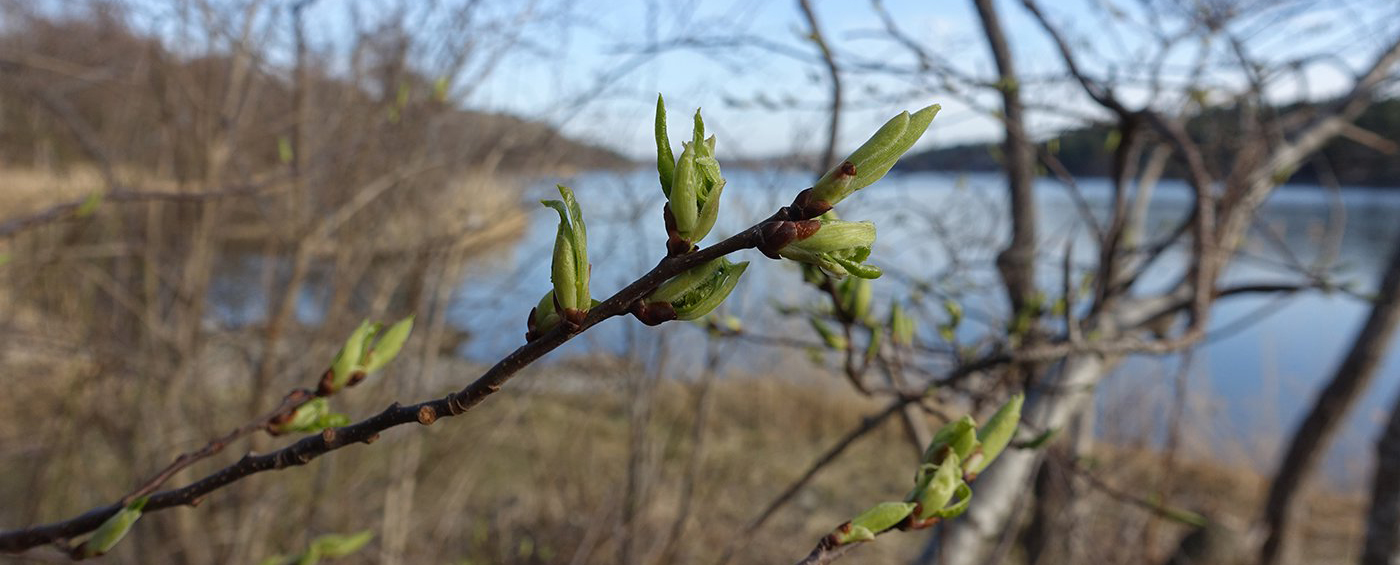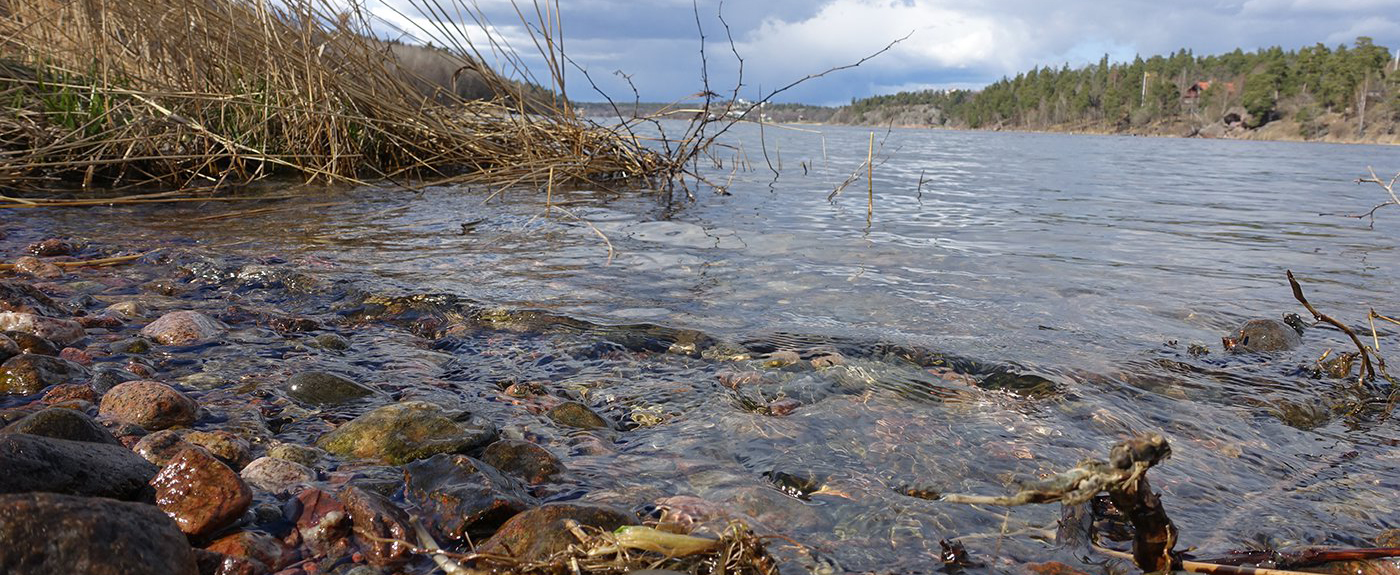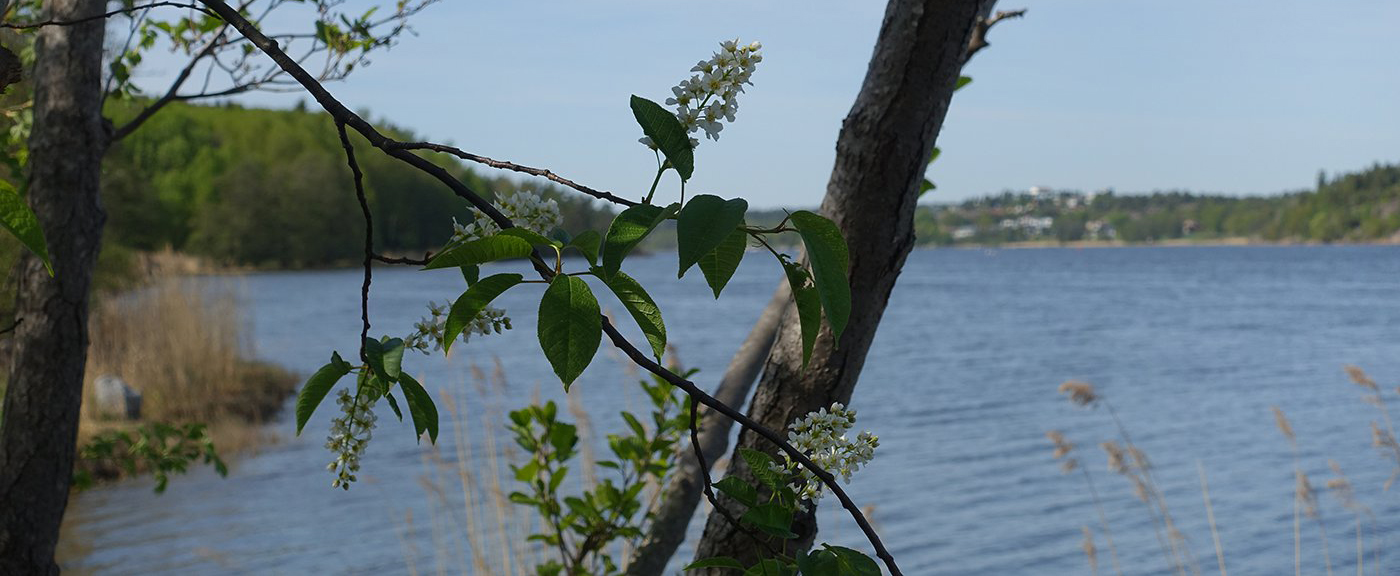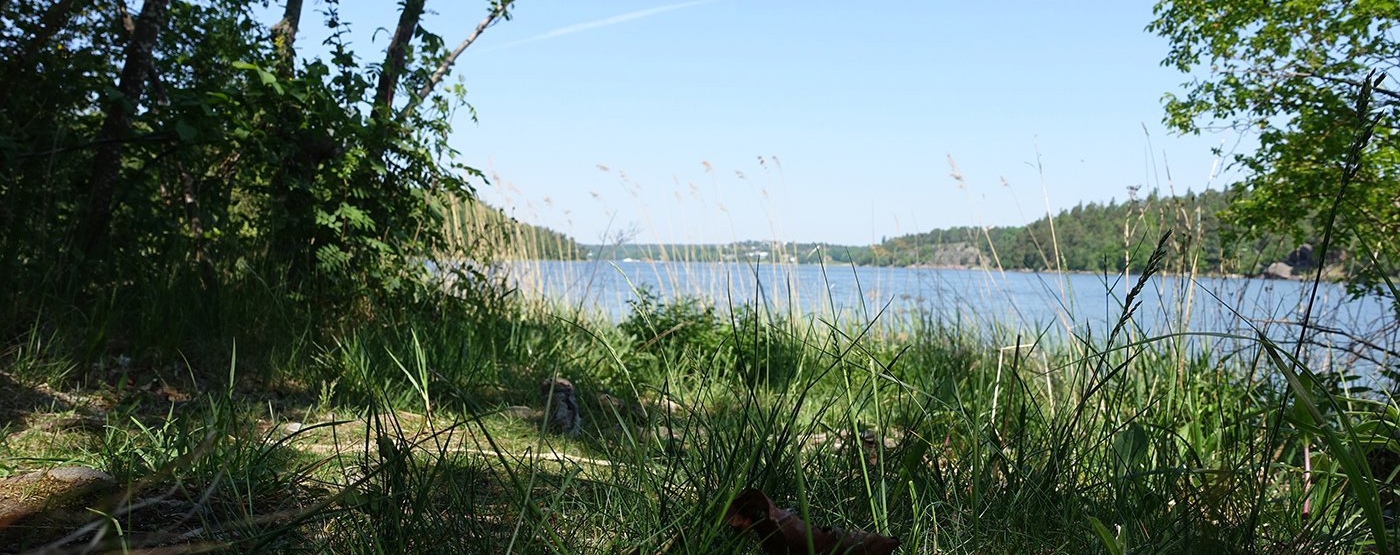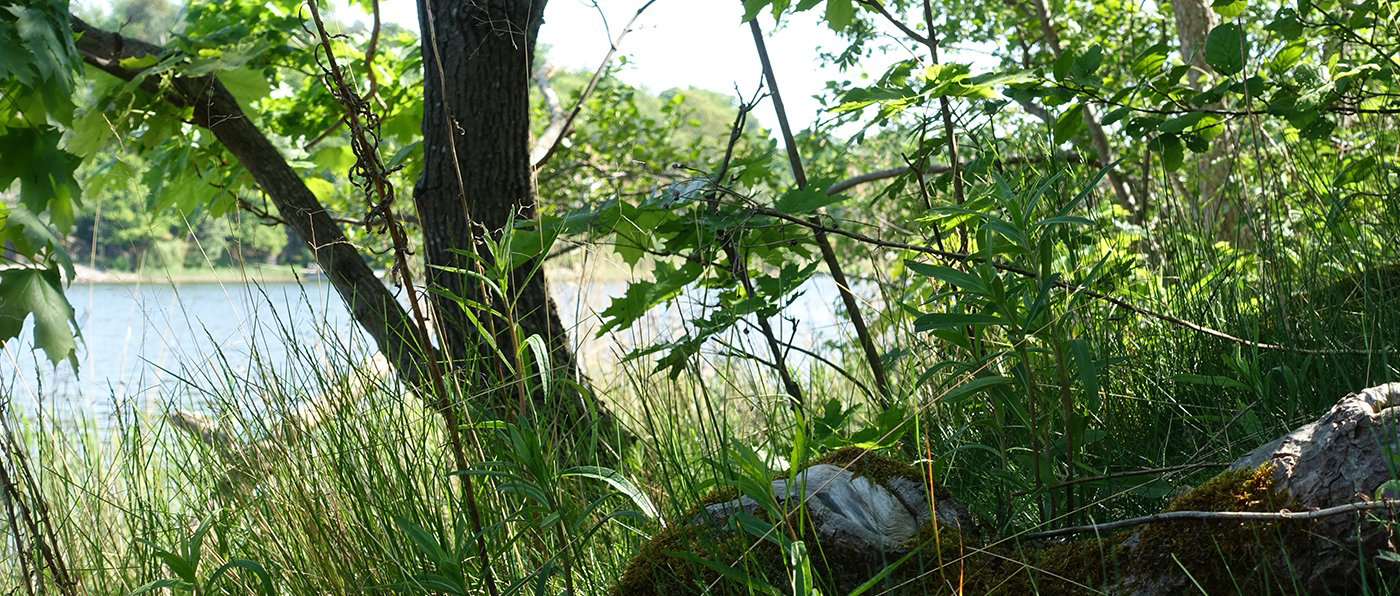Take a deep breath and watch this video.
Could you endure it? Could you enjoy it? Could your mind stay focused or did you start thinking about everything you have-to-do or should-do or shouldn't-have-done?
Did you start doing something on the side, a little multi-tasking? Most of us suffer from the inability to even for a moment be still and do nothing. The need to abolish every moment of waiting, silence and inactivity and to be entertained, informed or productive have gone crazy. Look around you in a waiting room, on a commuter train or even walking down the street, we are on and in our smart-phones. When we get home, we quickly fill the silence with TV, radio,computers and pads. Our bodies are present but our minds are more or less in the screen-world. Moments of stillness, just observing the world around us, being totally present, without trying to explain och interpret. That is probably one of the most fundamental human activities from the beginning of our time on this planet. We can assume that the early humans, in between the getting-food-and-water-and-shelter activities, had plenty of time to be still and observe. Technology, information and entertainment are part of our world today and have many positive sides, the challenge is to find a balance and give room for moments of stillness and inactivity.
Why? Why do we need to practice doing nothing, being still, slowing down? To be more innovative? To find solutions? To become a better listener? To enjoy life more? To see life in sharp full color instead of a blurry rush to the future?
Find out for yourself.

We have no earlids...and how to define silence?
We can not close our ears. They are always open. We live in a world filled with sounds and noises from dusk to dawn. Our open ears can not process all the sound impressions. Instead, we stop listening, we become desensitized.
We observe high and sharp sounds like police sirens or children screaming but we filter away more low-key everyday sounds. Most of us react, however, if the noise levels at work are too high or if the restaurant we eat lunch at does not offer some degree of peace and quiet. Many also feel uncomfortable with too much silence. When we come home and it is quiet we turn on the TV or music to fill the silent void. When we get into a car we directly turn on the radio. Another dilemma is our inner "mind noise". Often when we walk into a park we do not pay attention if it is quiet or noisy as we walk around with our head full of thoughts about what we should do, must do, or have not done. There is perhaps only one time each day when everyone really appreciates silence and that is when we sleep. To really hear the silence, as well as nature's own low-key sounds, we have to lower our stress levels and have a certain amount of inner silence and stillness. On the other hand, outer silence and calm natural environments can facilitate our ability to find peace and tranquility within. In the Guide to Silence project we are working with both the inner and outer aspect of silence.
To find and assess the external silence in natural green areas close to the city is a challenge. There are no official definitions of what can be called a quiet, green area. In Europe, there is something called the Environmental Noise Directive. This directive says that competent bodies in each country could designate Quiet Areas. So there are no comprehensive national or international definitions or criteria for quiet areas. Each country and city in Europe can decide for themselves what this means. Guidelines and criteria for sound levels and sound quality, which would define these areas as "silent", has been proposed in various EU projects. Such criteria could provide a framework for the protection of green areas and for including sound quality when designing new parks and recreation areas all over the world. In the Guide to Silence project in Stockholm, we have highlighted ideas about how we can describe, communicate and discuss sound levels and sound quality in the city:
Idea 1. Translate decibels into something people understand.
Bedroom Quiet ...........30 dBA
A small rapid..............40 dBA
Heavy rain...................45 dBA
Normal conversation...60 dBA
There is today a Swedish standard for new buildings that specifies that the sound levels in bedrooms should not exceed 30 dBA (as we need that level of quiet to sleep well). If you experience this "bedroom quiet" noise level in nature, you will find that it is very quiet. Most people also have a daily listening experience on the other end of this scale. The normal casual conversation is usually around 60 decibels (dBA). If you have to raise your voice, ambient noise is above this level. So, we have the knowledge and experience to roughly estimate sound levels below 30 or above 60 decibels. The limits that frequently have been used for classification of a quiet green areas are 45 or 50 dBA. This, however, also depends on our expectations and starting point. If you are on a busy street with lots of traffic and a sound level of 70-80 dBA and walk around the corner into a park with 55 dBA, will you most likely say that it is quiet. But, if you travel for an hour to find a quiet nature area and it's 55 dBA when you get there, you will likely think that it is very noisy. Nature, of course, also has its own sounds. The wind can be noisy and on a stormy day, you might have to shout to have a conversation. Yet, in general, we usually find the sounds of nature positive.
Idea 2. Take noise data, simply, and make it visual.
Most major cities have comprehensive data and computer-generated maps of how noise is spread through the city. In order to visualize noise data we copied a Norwegian model that had been used for quiet areas in Oslo. We changed it a little bit and have used it for the 11 nature and cultural reserves that are included in the Stockholm project.

The map shows how traffic noise is spreading in one of the nature reserves. Sporadic aircraft noise and boat traffic is not included. To make it more visual, we have only included the noise data inside the nature reserve. The numbered locations on this map offer quiet and varied nature. We carried out short sound measurements at the sites to confirm the sound levels in the computer models. In some cases we found sheltered small sites (in for example ravines and dense forest) that the computer model missed. One example of this is site number 1 on the map above.
Idea 3. Quiet, quieter, quietest? Comparing noise maps provides a visual image of the different levels of quiet we can find.
If you want to find a really quiet place, the noise maps can help you choose. You might have to travel a bit further out from the city (but all these areas can easily be reached by public transport). Have a look at these three examples.



Note on the third map. The dashed area on the other side of the water indicates the noise propagation of the port and workplace that will be constructed for the Stockholm Bypass Project. In this dashed area there will be noise levels of 50 dBA or more during the construction period.
Next step? How can we further develop these ideas? We could make it even easier and construct a rating for the level of quiet in different areas. We will work on including noise data, maps, directions and ideas of how to expand the experience in nature in existing and new apps. One of the goals of the Guide to Silence project is to increase awareness among city-planners, politicians and builders of the need to protect quiet green spaces for the benefit of people and nature. Another more direct goal is to entice people to go out and just be in calm nature.

The mall of Silence and Natural Wonder
A new shopping mall opened in Stockholm in November, it's called the Mall of Scandinavia and it's big. On the opening night it was crowded and the traffic was totally jammed all around. Less than 30 minutes away you can find one of the quietest and most beautiful areas inside the city limits of Stockholm, Kyrkhamn. The old definition of the word mall is a long open area where people can walk. So we can call Kyrkhamn for "the mall of Silence and Natural wonder". See for yourself, try our virtual walk in Kyrkhamn, link.
But there are never going to be any traffic jams in Kyrkhamn even though the human need for silence and a dose of nature probably is much bigger than the need for a visit to the latest shopping mall.

The Value of Silence and Sounds of Nature
What’s in it for me? What’s in it for us? We try evaluate everything from our own egocentric human perspective. We even now try to estimate the economic value of nature. What’s it worth to us to preserve this green area or this lake? Some say that we have to put a value on nature, since the world is run by investors, economists and finance ministers and economic value is the only language they understand.
But we can’t put a price tag on everything from our narrow human perspective. We have to see the intrinsic value of nature, we have accept that we are only one part of life on this planet. We have to be compassionate and look at the value from the plant and animal perspective. (The scary thing is that with a reversed perspective focused on what’s in it for the plants and animals, we would probably find that an extinction of us humans would be beneficial for the rest of life on this planet).
What about silence? What’s the value of quiet and calm? Silence is sometimes very directly connected to a price tag. The properties and houses in the quiet neighborhoods of a city are more expensive. Houses and apartments next to the highway or subway are a lot cheaper. A holiday resort or spa need to offer silence to be attractive. Expensive luxury cars use silence as a selling point, the cheapest cars are often a lot noisier. We do set a price-tag on silence or on the reduction of noise. But do we see the value of silence in our everyday life? Yes and no, everyone has at least a demand for silence once a day and that’s when we sleep. Our bedrooms need to be quiet, otherwise our sleep will be disturbed. A silent bedroom has a sound level of 20-30 decibels (dBA), the level we want and need. We also need a restriction of noise levels in the workplace. A very noisy workplace can be directly harmful to our health. The medium noisy workplace can raise our stress levels and leave us very tired at the end of the day. For work tasks that demand focus and concentration, most people prefer sound levels almost close to that of our bedrooms, 30-40 decibels (dBA). Today a lot of people are in a noisy sound bubble all day, from turning on the radio, TV, pad or computer in the morning to shutting it off at night. Silence seems to be scary. Even if we take a walk on our lunch break in a nice park we might not hear the silence and the sounds of nature. We need to be quiet and silence our mind to reach the level of presence needed to hear the silence and sounds of nature. One of my favorite sounds is the sound of a light breeze in the leaves. You can follow the sound as the wind passes by just like you can follow the sound of the waves on the beach. Nature is never totally silent. Wind, leaves, rivers, waves, birds create the natural soundscape. The sounds of nature are usually relaxing and comforting and an important part of the human experience in nature.
But if we leave the egocentric human perspective, what is the value of silence for the birds, trees and plants? We know that some animals communicate with sounds we can’t hear, we know that some birds change their voice in noisy environments, we know that animals and plants have a daily cycle of rest and activity and need the rest that a calm place provides, just like we do. But we don’t know enough about how nature is affected by our human noise pollution. In and around our cities manmade sounds (traffic, planes, boats and construction) reach deep into parks and green areas. Sometimes the nicest views are best viewed on a photograph since the traffic noise destroys the real experience. We have to accept some noise in the green areas near or in our cities, we have to listen to nature beyond the noise. But by raising the awareness and getting more and more people to see the value of quiet, calm green areas we can meet the challenge to protect, save and increase the silent green spaces we can find. Silent nature has a value for all the lifeforms on this planet.

The Power of a Walk in the Woods
One of my goals is to inspire and motivate people to create a daily habit that connects them to nature, provides a level of outer silence and at least a few moments of inner stillness. This could be a short walk on a lunch break with 10 minutes of just being in a nearby calm green area. But in addition to these short daily connections to nature there is also great value in longer walks on a weekly (or monthly) basis. In the fall of 2013 I was commissioned to do an inventory of silence and nature experiences in the nature reserves of Sollentuna, one of the communities in the county of Stockholm. This inventory revealed some fantastic places and great walks. Last week I felt the urge to really “walk my talk” and go on one of these great walks I found last year. I chose a walk in a nature reserve called Törnskogen, which is only a 10 minute drive from my home. I knew that the walk would take around 2 hours, but I was in no hurry and I could be gone a lot longer if needed. My overall aim was to just to be in and enjoy the walk in the the forest. The route would take me up to a fantastic viewpoint (Myrberget) and down to, the most silent place in last years inventory, a protected mossy forest ravine (mossiga skogsslänten).
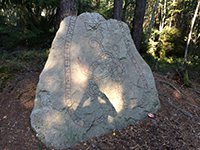
Knowledge versus “being”. After parking my car, getting my small backpack on, and turning my phone off, I got going. The first part of the trail is wide and easy to follow. Very soon you see a rune stone by the trail. This stone is 1000 years old and has an inscription that is translated on a small sign by the stone. It is fascinating that people have lived in this area and walked on these trails for so long. The stone also illustrates two different approaches/strategies for a walk in the woods. We can go out to learn about history, geology, the name of the trees, mushrooms and birds or we can go out and just be present in the forest. One strategy doesn’t exclude the other, learning-about-nature-tours usually have moments of just relaxing, listening and watching nature. But since everyday life is very much about knowledge, organisation, planning, numbers and letters (left brain activities) it’s beneficial to let the walk in the woods mainly be about the whole picture, the experience with all senses and the magic of nature (right brain activities). So I walk past the Rune stone, and leave the history lesson for another day.
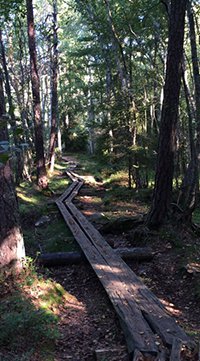
Slow.To increase the sense of presence and awareness I walk slower than normal. I walk so I can feel the ground under my feet and it’s even silent enough so I can hear my own footsteps. So often our walks are hurried; the aim being to get to the final destination as fast as possible. But here the aim is to just be and I have plenty of time. I also find that the slow pace opens other senses; I listen more carefully, I smell and touch the bark of the tree that I pass by. The pace of my steps sets the tone of the entire walk. Getting lost. The easy to follow trail soon turns into a maze of trails. I aim for the viewpoint on the way out but take the wrong turn and am for a while lost. This small mountain top is hard to find, no signs, trails in every direction and you can’t see the top from the forest trails. But it’s totally ok to be lost; I am in no hurry. I pick some blueberries, take an extra loop and just enjoy the nice weather. I eventually find the trail towards my end-point, the mossy forest ravine. So I change my plan and go there first. And yes it’s a silent place. I sit down and listen to the forest. It feels like the city is far far away, and the green moss and the trees embrace me. After sitting for while and enjoying this fantastic place I take out my sound-level meter (the left part of my brain needs some data to confirm the silence) and it is almost bedroom quiet 30-32 decibel (dBA). Just a very low traffic noise in the background and the wind in the trees and birds are the dominante sounds of nature. Way back. I go back the same way I came. The ten minutes or so I spent in the silent mossy forest ravine has made me more relaxed and I feel very present. Now I almost directly find the right way to the view-point I missed on the way out. Above the trees. This viewpoint is so impressive, it feels like you sit in the middle of a ocean of trees, you can’t see anything of the city in any direction (except as small piece of a power line in the north). But the city is close, a major highway 700 meters (less than half a mile) away, and houses in a suburb 400 meter (less than a quarter mile) away. Of course this view point is not as quiet as the mossy ravine. I have the noise from the highway behind me, but it’s not disturbing. I take out my sound-level meter and get a reading of 35-36 decibel (dBA). The fantastic view, all the trees surrounding me and old dead trees close by on the moss covered cliffs is part of the total experience and the noise level this day does not intrude to much. I slowly find my way back to the car, and yes I feel recharged, relaxed and present.

The Power of Big Views and Small Habits
The view is spectacular! We sit in silence as our breathing slowly gets back to normal. A three hour hike got us here; it wasn't that hard only a steep uphill on the final stretch. But it feels like we have left everyday life far behind and entered a new world. We are in the wilderness, away from civilization. When sitting in nature with a view like this the discussions almost by default hits the big questions. Life purpose, goals, visions, values and changes in everyday life we want to see. I often, with this kind of view in the wilderness, have discussions totally without boundaries, where everything seems possible. And when hiking slowly back the power of the big view stays with you. Monday morning, back to normal routines. The power of the big view is still there and if this was just the right time maybe it’s the start of a big life change. But often life just slowly gets back to normal and that big view fades away. Even if we can't directly realize the visions and goals that a visit in the wilderness might provide, it is still incredibly valuable. Even if it’s just once a year the power of that big view can stay with us and initiate change slowly. To take your kids out in nature can be a struggle and challenge. But I believe that even a few short wilderness outings a year can give your kids the power of the big view for life. Try to get your yearly or monthly or weekly “big view”. By the ocean, at the lake, in the forest, on the hilltop or the mountain. Some of you might live in places where you can get a dose of the big view and wilderness every week. For others it takes more travel and effort, and once a year might be the limit.
The Power of Small Habits. The power of the big view needs to be supported by daily habits. The big view give you visions and goals, small daily connections to nature give you presence, peace and focus. If we want a habit to stick access and repetition are two key elements. Try to find a relative quiet place in nature, close to your home or your workplace. A place that’s easy to access and you can visit daily. A place where you can sit down for 10 minutes, take a deep breath and just be. A place where you can take a “break from thinking” (see previous post). Even if you live in a big city you can often find a park, a green space by the water or a larger green area. The challenge in the city is often to find a piece of nature that’s relatively quiet. We need a certain level of outer silence to find inner stillness. Even if we can’t find the silence of the wilderness in the city, we often can find surprisingly quiet places in parks and green areas. You just have to start looking and listening.
Site content: Startpage - Projects - Story - Experiments - Blog - Next
På svenska/in Swedish

